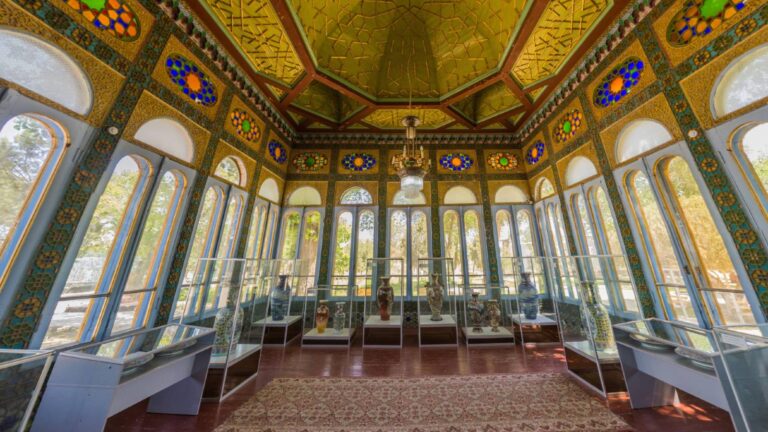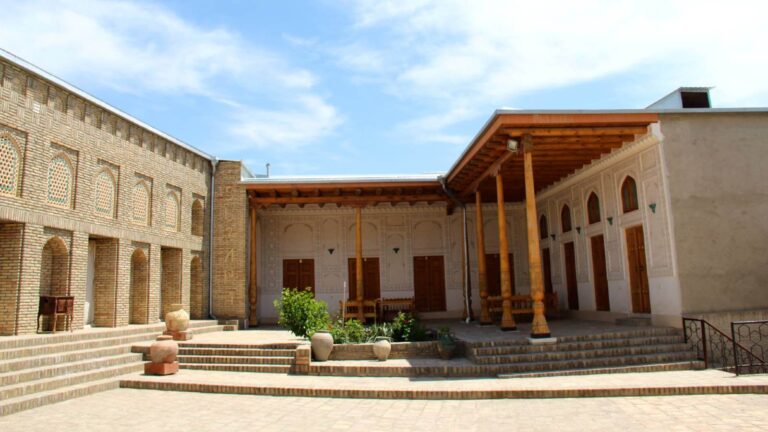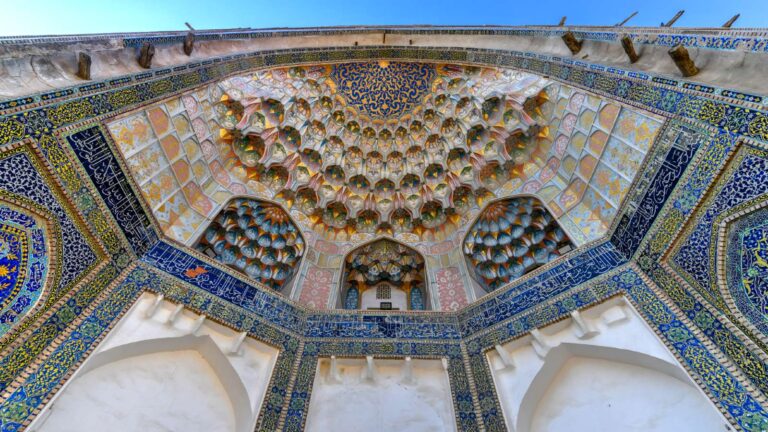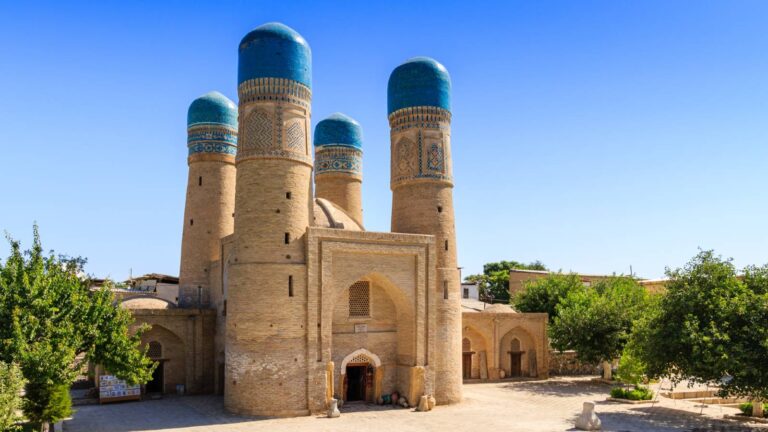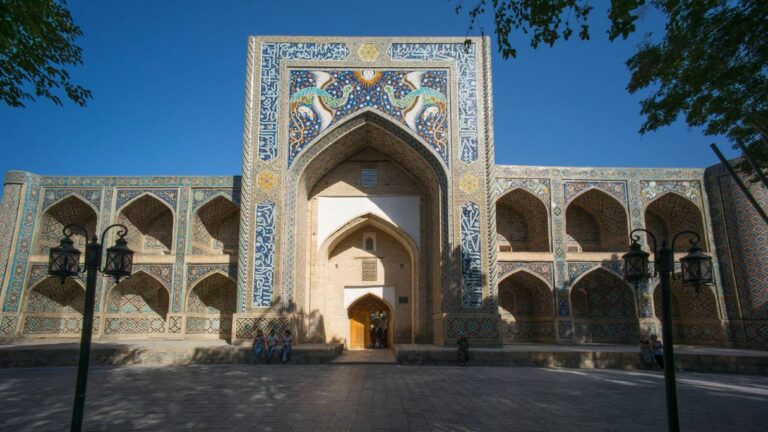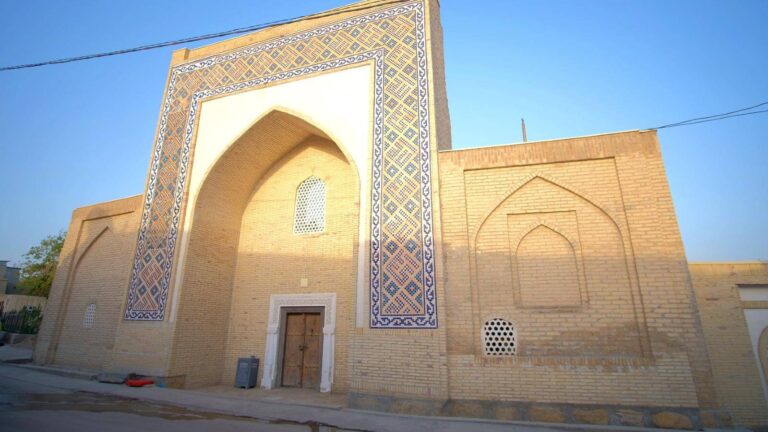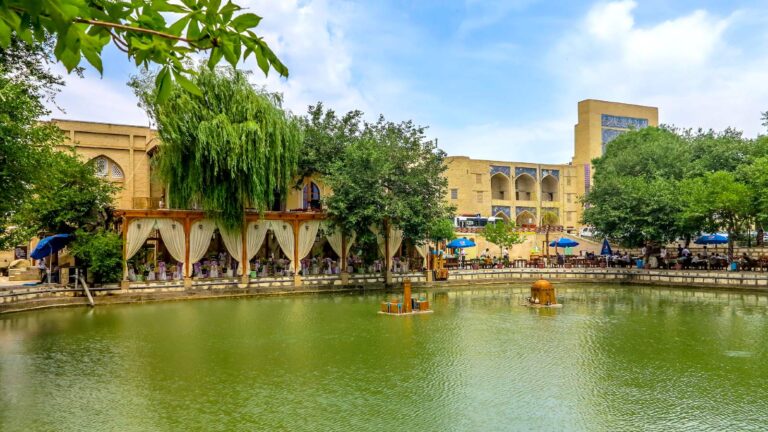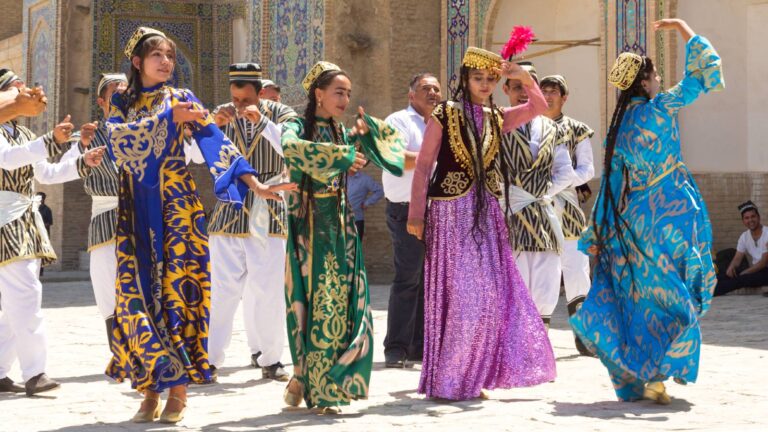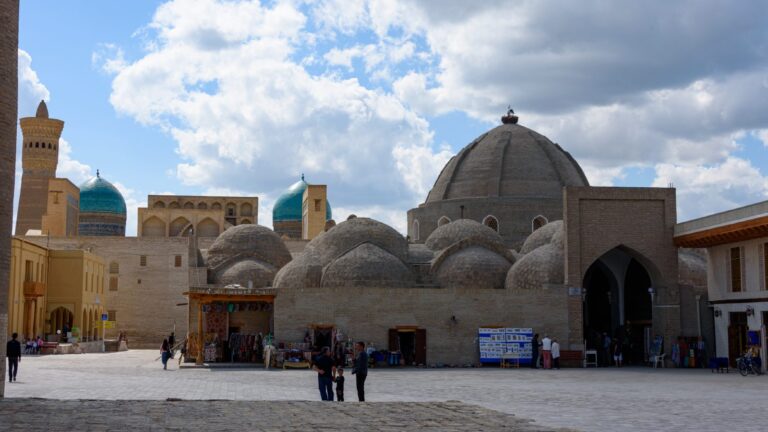Getting There
The madrasa is located in the historic center of Bukhara and is part of the Poi Kalon building complex , which is located southeast of the Ark Citadel . It lies to the east of the Kalon Mosque and is opposed to it in accordance with the Kosch principle . As the square slopes down to the east, the madrasa is built on a raised platform to maintain symmetry.
The madrassa Mir-Arab was built in 1536 in honor of Sufi Abdullah Mir-Arab, the spiritual mentor of Bukhara Emir Ubaidullah Khan. This building is not only a university, but also a mausoleum for Mir-Arab, where at his feet buried Ubaidullah Khan, according to the custom of the time.
What to Expect
Any tourist who wants to visit Bukhara, the pearl of the East, should definitely to get acquaint with this place. This is a wonderful sightseeing that fascinates with its soulful atmosphere of oriental colors and ornament – madrassa Mir- Arab.
The main facade of the Mir-Arab-Madrasa has a central pishtak with an ivan . Instead of the usual rectangular floor plan of the entrance ivan, this madrasa is a 5/8 octagon. On both sides of the Pischtak there are three axes of two-story pointed arch arcades with entrances to the student living quarters. A three-quarter-round corner tower, which ends with the upper edge of the arcades, closes off the facade from the outside.
The madrasa is 73 meters long and 55 meters wide and has an inner courtyard measuring 33 × 37 meters. The madrasa is constructed according to the four-iwan scheme : two pishtaks with iwans stand opposite each other in pairs in the middle of the sides of the courtyard. There are a total of 114 living cells for students.
On the south side of the square between the madrasa and the mosque are the Kalon Minaret and the Emir Alim Khan Madrasa.
History
Construction of the Miri-Arab madrasah dates back to the 16th century and is related to the sheikh Abdallah Yamani (from Yemen), the spiritual pir (guide) of sheybanids. The exact date of the beginning of the construction is still unknown.
According to one version, scientists believe that the building was erected in the period of 1530-1535/1536. The other version states, that the madrasah was built to celebrate the victory of the sheybanid army over the troops of the Sefevid shah Ismail I in the battle of Gijduvan in 1512. It is also supposed that the final construction works were carried out on the funds of Ubaydulla-khan; the money received from the sale of 3000 captive Iranians to slavery.
Facilities Available
At the entrance to the complex, you’ll find a special ritual pole mounted at the wall of the building. Austere, majestic madrassa with two large domes is a perfect ensemble together with a mosque and a minaret. At sunset, it pours gold, allowing any visitor to enjoy the incredibly beautiful atmosphere that resembles the eastern tale.
Despite the fact that now madrassa aims to provide spiritual education, the institution is open for tourists and amazing life of Muslim University can be seen at any time.
Students do not pay too much attention to the tourists, go about their business. However, visitors behave quietly, staring admiringly internal entrance arches in madrassa.

